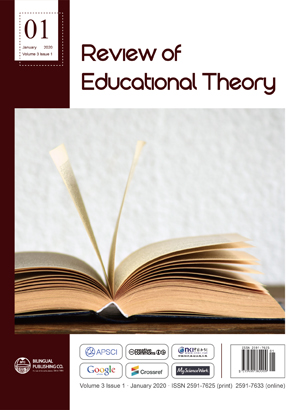The Application of Immersive Experience in Museum Teaching
DOI:
https://doi.org/10.30564/ret.v3i1.1722Abstract
In recent years, museums have shifted from “things as the core to people as the core”. The people-oriented navigation model has increasingly become the center of the museum’s youth education. However, the inherent shortcomings of traditional museum teaching no longer meet the needs of today’s society. Therefore, from the perspective of immersive teaching, the author innovates museum teaching. The design of a new museum teaching mode through the integration of the Dick & Carey model and the “learning” -based teaching model is important for the application of immersive teaching in museum education.Keywords:
Immersive experience; Museum; ExploratoryReferences
[1] Yanru Wu. The influence of foreign language environment and second language environment on learners’ language development and its enlightenment on teaching Chinese as a foreign language [J/OL]. Northern literature (late),2017(08):141-142[2020-02-06].
[2] Pinghua Yuan, Liming Yu. Immersion bilingual education in Canada and submerged bilingual education in the United States [J]. Comparative education research,2005(08):86-90+76. (in Chinese)
[3] Yuelin Zhou, Liuyan Yu. Application exploration of immersive teaching in teaching reform of guided system design [J]. Art education,2019(07):170-171. (in Chinese)
[4] Qi Yang. Exploration of the Museum’s Youth Education Activities——Taking the Fun Guided Teaching of Dongguan Museum as an Example [J]. Heritage and Protection Research, 2019. (in Chinese)
[5] Tianyiao Xu①. Application of Inquiry Teaching Method in Popular Science Education Activities [J]. Research in Natural Science Museum, 2017 (s2). (in Chinese)
[6] Walter Dick. The Dick and Carey model: Will it survive the decade?[J]. Educational Technology Research & Development, 1996, 44(3):55-63.Weiyun Zhang. Exploring the Significance of Museums in Youth Education [J]. World Education Information, 2012 (5): 48-50.
[7] Tianyiao Xu①. Application of Inquiry Teaching Method in Popular Science Education Activities [J]. Research in Natural Science Museum, 2017 (s2). (in Chinese)
[8] Weiyun Zhang. Exploring the Significance of Museums in Youth Education [J]. World Education Information, 2012 (5): 48-50. (in Chinese)
Downloads
Issue
Article Type
License
Copyright and Licensing
The authors shall retain the copyright of their work but allow the Publisher to publish, copy, distribute, and convey the work.
Review of Educational Theory publishes accepted manuscripts under Creative Commons Attribution-NonCommercial 4.0 International License (CC BY-NC 4.0). Authors who submit their papers for publication by Review of Educational Theory agree to have the CC BY-NC 4.0 license applied to their work, and that anyone is allowed to reuse the article or part of it free of charge for non-commercial use. As long as you follow the license terms and original source is properly cited, anyone may copy, redistribute the material in any medium or format, remix, transform, and build upon the material.
License Policy for Reuse of Third-Party Materials
If a manuscript submitted to the journal contains the materials which are held in copyright by a third-party, authors are responsible for obtaining permissions from the copyright holder to reuse or republish any previously published figures, illustrations, charts, tables, photographs, and text excerpts, etc. When submitting a manuscript, official written proof of permission must be provided and clearly stated in the cover letter.
The editorial office of the journal has the right to reject/retract articles that reuse third-party materials without permission.
Journal Policies on Data Sharing
We encourage authors to share articles published in our journal to other data platforms, but only if it is noted that it has been published in this journal.




 Huiping Luo
Huiping Luo

